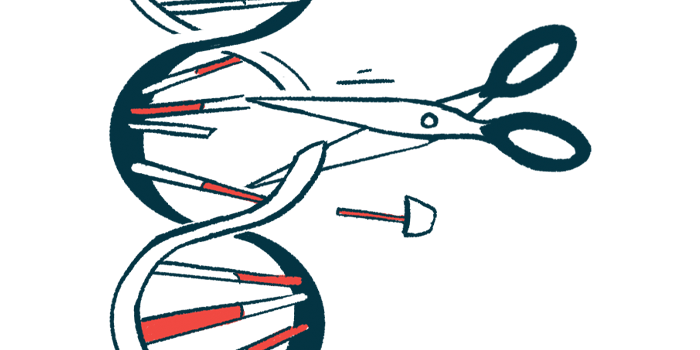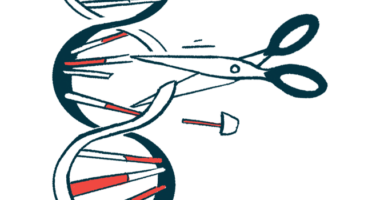Gene editing fixes common RDEB mutation in patient-derived cells
A cytosine base editor can make DNA changes by converting nucleotide base pairs

Researchers in the U.K. used a gene editing tool to fix a common mutation causing recessive dystrophic epidermolysis bullosa (RDEB), enabling cells from a patient to restore production of type VII collagen (C7), a protein they lacked.
With enough C7, the fixed cells were also able to rebuild the integrity of skin tissue layers — which is typically impaired in RDEB — grafted onto the back of mice.
That’s according to the study, “Cytosine deaminase base editing to restore COL7A1 in dystrophic epidermolysis bullosa human:murine skin model,” published in JID Innovations.
Epidermolysis bullosa is caused by mutations in genes that code for proteins that help anchor skin layers. Without them, the skin and mucous membranes (the moist tissue linings inside the body’s openings) become prone to blistering and tearing.
Among experimental treatments, there’s gene therapy aboard viral vehicles, but it has limitations, notably the amount of genetic material they can carry, which is relatively small. They also can’t control how much of the carried gene is turned into protein.
“Genome editing strategies, however, can be used to mediate precise, locus-specific correction of disease-causing mutations,” the researchers wrote. Previous work has made use of an adenine base editor (ABE) to fix disease-causing mutations in lab-grown fibroblasts.
Here, the researchers turned to a cytosine base editor (CBE), a type of gene editing tool that can make precise changes to DNA by converting nucleotide base pairs (letters of the genetic code) from C-G to T-A. DNA is made up of two strands of nucleotides running in opposite directions, with nucleotides on one strand pairing with specific matches on the other (G with C and A with T).
This is done using a special kind of enzyme called a cytidine deaminase fused to a protein that can target a specific sequence of nucleotides within the genome. When CBE is delivered to cells, it finds its target sequence and makes changes without cutting through the DNA.
To test the CBE, the researchers used patient-derived fibroblasts carrying two copies of a mutation known as c.425A>G in COL7A1, a gene that provides instructions for making part of C7. Fibroblasts are cells in the skin that make connective tissue and are critical for healing wounds.
The fibroblasts were grown in the lab and given cues to become stem cells. Upon delivery of the CBE, the mutation was fixed in up to 61% of the fibroblasts and 45% of the stem cells.
There were some unintended changes off-target, “indicating the need for further improvements,” the researchers wrote. The proportion of cells where the mutation was fixed in the absence of unintended changes was 46% for fibroblasts and 23.5% for stem cells.
Under the microscope, the researchers observed C7 production in about 29% of the fixed cells. This was enough for the protein to build up in layers of skin tissue grafted onto the back of mice.
There, C7 helped form structures known as anchoring fibrils, which can stick the dermis onto the epidermis, the outer layer of the skin.
“The results demonstrate the potential and promise of emerging base editing technologies in tackling inherited disorders with well-defined single nucleotide mutations,” the researchers said.







